Luis Ángel Rodríguez del Bosque
Luis Ángel Rodríguez del Bosque joined the CIMMYT Board of Trustees in March 2020.
Rodríguez is the General Director of Mexico’s National Forestry, Crops and Livestock Research Institute (INIFAP).
Luis Ángel Rodríguez del Bosque joined the CIMMYT Board of Trustees in March 2020.
Rodríguez is the General Director of Mexico’s National Forestry, Crops and Livestock Research Institute (INIFAP).
Corn is one of the most widely produced crops in the world, and Mexico is home to at least 60 recorded unique landraces, the traditional, locally adapted strains. Preserving these ancient varieties is key for future sustainability, explains geneticist Martha Willcox, who works with the Mexico-based International Maize and Wheat Improvement Center (CIMMYT) to conserve the genes of dwindling crops. But left in the hands of aging campesinos, ancestral maize is at risk of becoming extinct. And the consequent loss of biodiversity, the FAO warned in its 2010 report, will have a major impact on the ability of humankind—which will number nine billion by 2050—to combat food insecurity in the face of climate change.
Read more here: https://www.macleans.ca/society/why-heirloom-tortillas-are-an-endangered-species/
Some of Mexico’s favorite dishes are taking on a new hue with blue corn chips, blue tortillas or blue tamales. But should breeders, millers, processors and farmer organizations invest in expanding the production of blue maize and blue maize products? Are consumers really interested, and are they willing to pay more?
CIMMYT markets and value chain specialist Trent Blare explains, in one minute, the results of his study, which gives insight into Mexican consumers’ preferences and demand for blue maize tortillas. Consumers near Mexico City perceived blue maize tortillas to taste better and were willing to pay up to a third more to buy them for special family events or to consume them in a restaurant .
A new study by researchers at the International Maize and Wheat Improvement Center (CIMMYT) assesses how three large projects have scaled service provision models for agricultural mechanization in Bangladesh, Mexico and Zimbabwe. In what is possibly the first cross-continental assessment of these issues to date, the study gauges the extent to which each initiative fits with the needs of its environment to enable sustained machinery use by farmers at a large scale, while acknowledging the influence of project design on outcomes.
Each of the projects has made considerable progress towards increasing the adoption of agricultural machinery in their target area. In Bangladesh and Mexico, mechanization service providers and machinery dealers have been able to strengthen their business cases because the projects use geospatial and market data to provide targeted information on client segmentation and appropriate cropping systems. In Zimbabwe, CIMMYT and partners have worked to strengthen the market for two-wheeled tractors by creating demand among smallholders, developing the capacity of existing vocational training centers, and spurring private sector demand.
However, despite these initial successes, it can often be difficult to gauge the sustained change and transformative nature of such interventions.
Applying a scaling perspective
To address this challenge, research teams held a series of workshops with project partners in each country, including regional government representatives, national and local private sector stakeholders, and direct project collaborators such as extension agents and site managers. Participants were asked to answer a series of targeted questions and prompts using the Scaling Scan, a user-friendly tool which facilitates timely, structured feedback from stakeholders on issues that matter in scaling. Responses given during this exercise allowed project designers to analyze, reflect on, and sharpen their scaling ambition and approach, focusing on ten scaling ‘ingredients’ that need to be considered to reach a desired outcome, such as knowledge and skills or public sector governance.
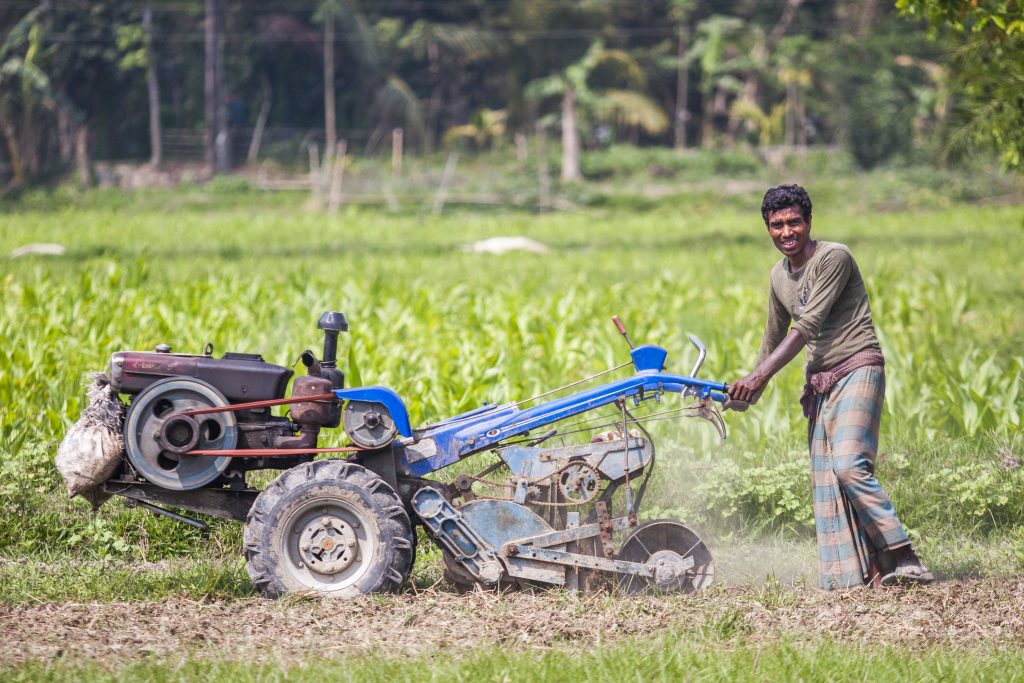
“Although at first sight the case studies seem to successfully reach high numbers of end users, the assessment exposes issues around the sustainable and transformative nature of the project interventions,” says Lennart Woltering, a scaling advisor at CIMMYT.
The added value of this approach, explains Jelle Van Loon, lead author and CIMMYT mechanization specialist, is that lessons learned from project-focused interventions can be amplified to generate broader, actionable knowledge and implement thematic strategies worldwide. “This is especially important for CIMMYT as we do exactly that, but often face different constraints depending on the local context.”
The use of a scaling perspective on each of these projects exposed important lessons on minimizing project dependencies. For example, though each project has invested considerably in both capacity and business development training, in all three case studies the large-scale adoption of recommended service provision models has been limited by a lack of finance and insufficient collaboration among the value chain actors to strengthen and support mechanization service provider entrepreneurs.
“While provision of market and spatial information helps local businesses target their interventions, local stakeholders are still dependent on the projects in terms of transitioning from project to market finance, facilitating collaboration along the value chain, and provision of leadership and advocacy to address issues at governance level,” Woltering explains. This, Van Loon adds, demonstrates a need for the inclusion of properly planned exit strategies from projects, as well as a degree of flexibility during the project development phase.
In all three regions, the supply of appropriate mechanization services is struggling to meet demand and few solutions have been found to support the transition from project to market finance. Continued capacity development is required at all stages of the value chain to ensure the provision of high-quality services and it has been suggested that incentivizing potential clients to access mechanization services and linking service providers with machinery dealers and mechanics might produce more satisfying results than simply supporting equipment purchases.
Read the full study: Scaling agricultural mechanization services in smallholder farming systems: Case studies from sub-Saharan Africa, South Asia, and Latin America. 2020. Van Loon, J., Woltering, L., Krupnik, T.J., Baudron, F., Boa, M., Govaerts, B. In: Agricultural Systems v. 180.
See more recent publications by CIMMYT researchers:
Maize is more than a crop in Mexico. In many cases, it connects families with their past. Landraces are maize varieties that have been cultivated and subjected to selection by farmers for generations, retaining a distinct identity and lacking formal crop improvement. They provide the basis of Mexico’s maize diversity.
Back in 1966-67, researcher Ángel Kato from the International Maize and Wheat Improvement Center (CIMMYT) collected 93 maize landraces samples from 66 families in Mexico’s state of Morelos. These seeds were safeguarded in CIMMYT’s Germplasm Bank, which today stores 28,000 samples of maize and its wild relatives from 88 countries.
50 years later, doctoral candidate Denisse McLean-Rodriguez, from the Sant’Anna School of Advanced Studies in Italy, and researchers from CIMMYT started a new study to trace the conservation and abandonment of maize landraces over the years.
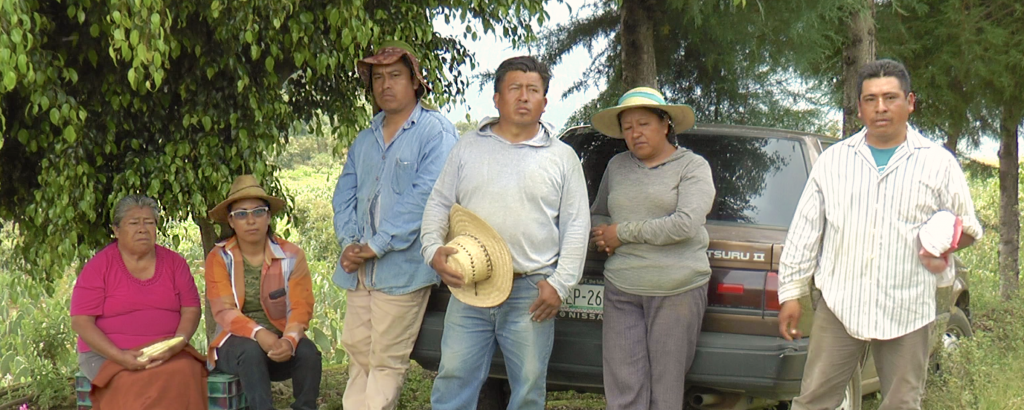 The study shows that landrace abandonment is common when farming passes from one generation to the next. Older farmers were attached to their landraces and continued cultivating them, even in the face of pressing reasons to change or replace them. When the younger generations take over farm management, these landraces are often abandoned. Nonetheless, young farmers still value the cultural importance of landraces.
The study shows that landrace abandonment is common when farming passes from one generation to the next. Older farmers were attached to their landraces and continued cultivating them, even in the face of pressing reasons to change or replace them. When the younger generations take over farm management, these landraces are often abandoned. Nonetheless, young farmers still value the cultural importance of landraces.
Maize landraces can be conserved “in situ” in farmers’ fields and “ex situ” in a protected space such as a germplasm bank or community seed bank. The loss of landraces in farmers’ fields over 50 years emphasizes the importance of ex situ conservation. Traits found in landraces can be incorporated into new varieties to address some of the world’s most pressing agriculture challenges like changing climates, emerging pests and disease, and malnutrition.
This research was supported by the CGIAR Research Program on Maize (MAIZE), the Sant’Anna School of Advanced Studies, Wageningen University and the Global Crop Diversity Trust.
Rezatec, a leading provider of geospatial data analytics, has launched a free smartphone app which acts as a portal for farmers to record their agricultural activities and provides recommendations for optimal sowing and irrigation scheduling. Based on preliminary results from the experimental stations, the app has demonstrated the potential to increase wheat yields by up to 12%.
“Yaqui Valley farmers are very experienced farmers; however, they can also benefit by using an app that is designed locally to inform and record their decisions,” explains Francelino Rodrigues, Precision Agriculture Scientist at CIMMYT. “Sowing and irrigation timing are well known drivers of yield potential in that region – these are two features of the app we’re about to validate during this next season.”
Read more here: https://www.realwire.com/releases/New-mobile-app-helping-Latin-American-farmers-increase-crop-yields-by-12
The Maize Lethal Necrosis (MLN) Gene Editing Project uses gene editing technology to transform four elite CIMMYT maize lines which are susceptible to a devastating maize disease known as MLN. The disease first appeared in Kenya in 2011, and by 2013 it had reduced maize yields across the country by an average of 22%, resulting in loss of production worth $180 million and forcing many smallholder farmers to abandon planting maize. By 2014 it had spread to D.R. Congo, Ethiopia, Kenya, Rwanda, Tanzania and Uganda, hence posing a major threat to the food security and livelihoods of millions of Africans.
CIMMYT and its partners have responded to the problem by successfully developing MLN-tolerant hybrids through conventional backcrossing, which takes approximately 4-5 years. On the other hand, with the use of a gene editing technology known as CRISPR-Cas9, the breeding process can be accelerated, thereby reducing the time required to 2-3 years only, so that smallholders get faster access to improved maize varieties.
In partnership with Corteva Agriscience — which has significant expertise in the genome-editing field and who is the technology owner — and KALRO (Kenya Agricultural and Livestock Research Organization), CIMMYT scientists have been able to make a breakthrough via the CRISPR-Cas9 technology. The technology, Clustered Regularly Interspersed Short Palindromic Repeats (CRISPR) along with CRISPR-associated System (Cas) containing Protein 9, functions to replicate natural mutations in maize that will help strengthen its resistance to MLN. At the same time, this precisely targeted crop improvement process eliminates the transfer of many undesirable genes that would often accompany the desired ones as with the case in traditional backcrossing.
Under this project, four CIMMYT inbred lines, that are parents of two commercial hybrids in eastern Africa but susceptible to MLN, have been selected to undergo gene editing to become MLN-resistant. The edited, MLN-resistant lines will in turn be used to produce MLN-resistant hybrids which will still carry all the farmer-preferred agronomic traits including drought tolerance, similar to other elite maize hybrids developed by CIMMYT and released through partners.
CIMMYT is working in close collaboration with KALRO and other partners from the public and private sectors to increase the number of MLN-resistant Africa-adapted inbred lines and hybrids, as well as to make deployment efforts. By 2025, subject to compliance with regulatory procedures, commercial seeds of the gene-edited MLN-resistant elite maize hybrids will be available to up to 20,000 smallholder farmers for approximately 40,000 hectares of planting. In line with the CGIAR Principles on the Management of Intellectual Assets and CIMMYT’s constant endeavor to treat its improved germplasm as international public good, the MLN-resistant hybrids will be available royalty-free and seed companies entering into commercialization/licensing agreements in connection with this project will not be allowed to charge smallholder farmers higher seed cost. In this way, more farmers in MLN-affected countries in eastern and Central Africa can eventually benefit from increased supply of high-yielding, MLN-resistant and affordable maize products.
Related documents:
The CIMMYT germplasm bank is located near Texcoco, Mexico and is known for Norman Borlaug, father of modern agriculture and the “Green Revolution” who fought hunger in the later 1940s.
Read more here: https://www.excelsior.com.mx/nacional/mexico-quiere-seguir-siendo-el-pueblo-del-maiz/1360678#.Xi9bHcgLM3U.twitter
Seed banks, like the one at CIMMYT’s headquarters in Mexico, are part of planning for the future of food. CIMMYT protects the biodiversity of maize and wheat with more than 30,000 samples of maize and 150,000 of wheat.
Watch video here.
The grower of the world’s largest corn cob is farmer Jesús Nazario Elías Moctezuma, who won the annual corn cob competition in Jala, Nayarit, in December. He acknowledges the work of INIFAP, CIMMYT and the Mexico Corn Tortilla Foundation to recuperate native maize species.
Read more here: https://mexiconewsdaily.com/news/worlds-largest-corn-cob/
Simon Fonteyne, Miguel Angel Martinez, Abel Saldivia and Nele Verlhust conducted an investigation on conservation agriculture, and found that conservation agriculture under irrigation conditions increases yields and soil organic carbon, even in poor quality soil.
Read more here: https://www.eluniversal.com.mx/nacion/trabajan-en-metodo-para-aprovechar-suelo
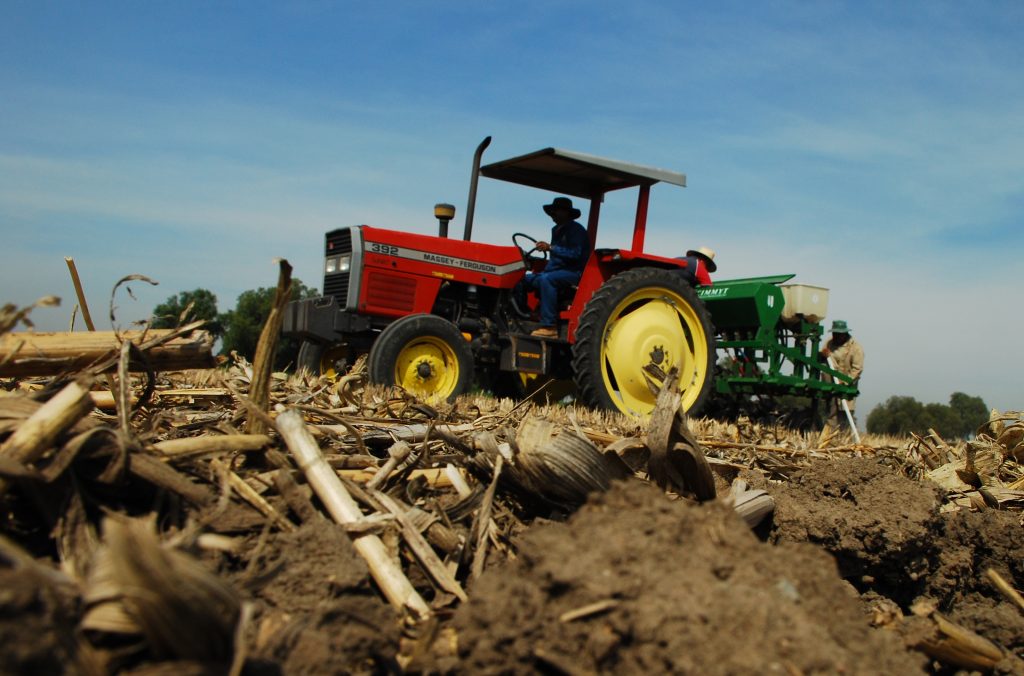
New research published in Field Crops Research by scientists at the International Maize and Wheat Improvement Center (CIMMYT) responds to the question of whether wheat varieties need to be adapted to zero tillage conditions.
With 33% of global soils already degraded, agricultural techniques like zero tillage — growing crops without disturbing the soil with activities like plowing — in combination with crop residue retention, are being considered to help protect soils and prevent further degradation. Research has shown that zero tillage with crop residue retention can reduce soil erosion and improve soil structure and water retention, leading to increased water use efficiency of the system. Zero tillage has also been shown to be the most environmentally friendly among different tillage techniques.
While CIMMYT promotes conservation agriculture, of which zero tillage is a component, many farmers who use CIMMYT wheat varieties still use some form of tillage. As farmers adopt conservation agriculture principles in their production systems, we need to be sure that the improved varieties breeders develop and release to farmers can perform equally well in zero tillage as in conventional tillage environments.
The aim of the study was to find out whether breeding wheat lines in a conservation agriculture environment had an effect on their adaptability to one tillage system or another, and whether separate breading streams would be required for each tillage system.
The scientists conducted parallel early generation selection in sixteen populations from the breeding program. The best plants were selected in parallel under conventional and zero-till conditions, until 234 and 250 fixed lines were obtained. They then grew all 484 wheat lines over the course of three seasons near Ciudad Obregon, Sonora, Mexico, under three different environments — zero tillage, conventional tillage, and conventional tillage with reduced irrigation — and tested them for yield and growth traits.
The authors found that yields were better under zero tillage than conventional tillage for all wheat lines, regardless of how they had been bred and selected, as this condition provided longer water availability between irrigations and mitigated inter-irrigation water stress.
The main result was that selection environment, zero-till versus conventional till, did not produce lines with specific adaptation to either conditions, nor did it negatively impact the results of the breeding program for traits such as plant height, tolerance to lodging and earliness.
One trait which was slightly affected by selection under zero-till was early vigor — the speed at which crops grow during the earliest stage of growth. Early vigor is a useful adaptive trait in conservation agriculture because it allows the crop to cope with high crop residue loads — materials left on the ground such as leaves, stems and seed pods — and can improve yield through rapid development of maximum leaf area in dry environments. Results showed that varieties selected under zero tillage showed slightly increased early vigor which means that selection under zero tillage may drive a breeding program towards the generalization of this useful attribute.
The findings demonstrate that CIMMYT’s durum wheat lines, traditionally bred for wide adaptation, can be grown, bred, and selected under either tillage conditions without negatively affecting yield performance. This is yet another clear demonstration that breeding for wide adaptation, a decades-long tradition within CIMMYT’s wheat improvement effort, is a suitable strategy to produce varieties that are competitive in a wide range of production systems. The findings represent a major result for wheat breeders at CIMMYT and beyond, with the authors concluding that it is not necessary to have separate breeding programs to address the varietal needs of either tillage systems.
This work was implemented by CIMMYT as part of the CGIAR Research Program on Wheat (WHEAT).
Read the full study:
Durum wheat selection under zero tillage increases early vigor and is neutral to yield.
Whenever seed is transferred between countries, continents or regions there is an inherent risk that new plant pathogens could spread to previously non-infested areas — with potentially devastating consequences. FAO estimates that these pathogens are responsible for the loss of up to 40% of global food crops, and for trade losses in agricultural products exceeding $220 billion each year.
With old and new pests and diseases causing devastation across the world, it is becoming increasingly important to consider plant health. This is especially true at the International Maize and Wheat Improvement Center (CIMMYT), an organization which processes and distributes enormous quantities of seed each year and in 2019 alone sent over 10,000 tons to more than 100 partners in Africa, the Americas, Asia and Europe.
Amos Alakonya joined CIMMYT in July 2019, and as head of the organization’s Seed Health Unit he is acutely aware of the need to mitigate risk throughout the seed production value chain.
In the lead up to this year’s International Phytosanitary Awareness Week, the plant pathologist sits down to discuss pests, screening procedures, and explain why everyone should be talking about seed health.
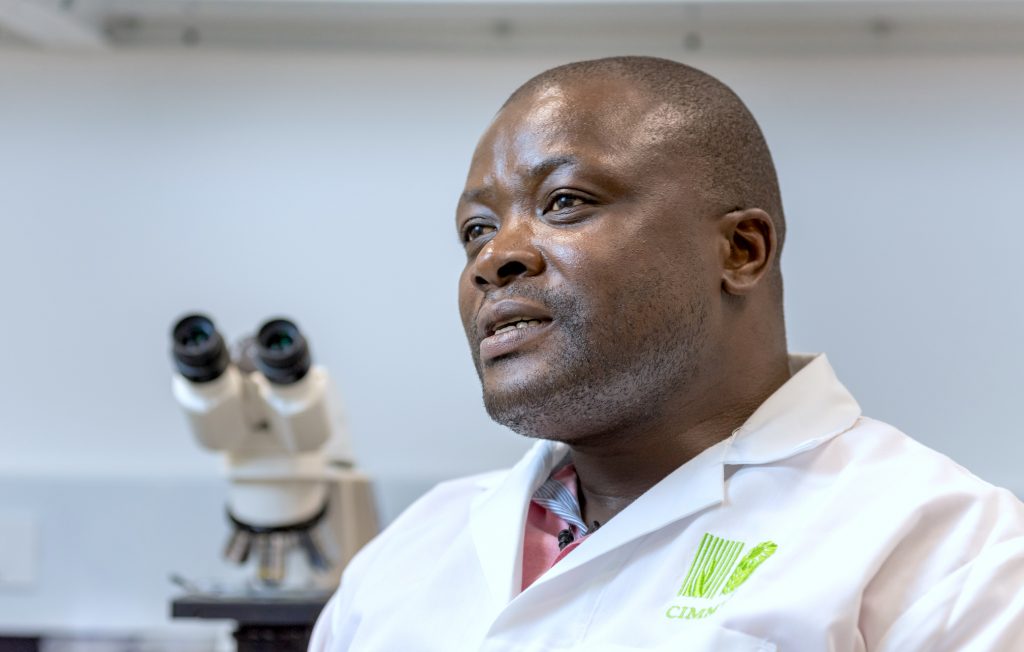
Can you start by telling us about the CGIAR Germplasm Health Unit consortium and what it does?
Within CGIAR we have a cluster called Genebank Platform whose main function is to support CGIAR efforts in conservation and distribution of germplasm. Ten CGIAR Centers have germplasm banks that work closely with germplasm health units to ensure that they only distribute plant materials free from pests and diseases.
What is the procedure for introducing seed at CIMMYT?
At CIMMYT, researchers must follow the correct procedure when bringing in seed. Once someone has identified the need to bring in seed, contacted a supplier and agreed on the genotypes and amount required, the responsibility is transferred to the Seed Health Unit. We take care of communication with the seed supplier and provide support in acquisition of the necessary phytosanitary documentation that will ensure compliance with host country rules.
For instance, we will process and provide a plant import permit allowing us to bring in the seed while also stipulating the conditions it must meet before entry into Mexico. This document is used as the standard guide by the authorities in the supplier country, commonly referred to us National Plant Protection Organization (NPPO). The NPPO will then perform a pre-shipment verification and issue a phytosanitary certificate if the seed meets the standards stated in the import permit.
Because we distribute our materials as public goods, we ensure that all seed sent out or received can be used and distributed without restrictions from the supplier or the recipient. This is achieved by the signing of a standard material transfer agreement that complies with International treaty on Plant Genetic Resources for Food and Agriculture. This is done through CIMMYT’s legal unit.
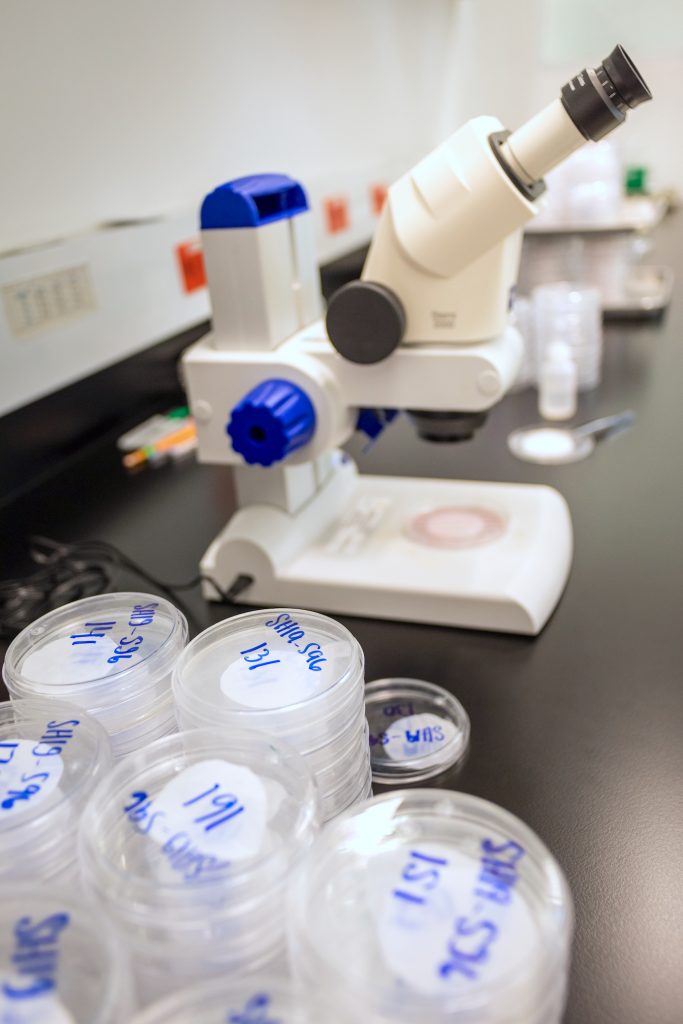
Once we have received all the necessary documents, materials are cleared through customs and delivered to the lab, where we begin our analysis. The first thing we do is assess the material visually and confirm there is no discoloration and no foreign material like soil or seeds from other species. At the next stage, we set up several assays to detect fungi, bacteria and viruses. We only release seed to scientists or allow distribution after we’ve confirmed they are free from injurious pathogens. Overall, this process takes between 25 and 40 days, so scientists must plan ahead to avoid any inconvenience.
That sounds like a complex process. Do you face any challenges along the way?
There are several challenges but we work around them. One of the biggest ones is meeting up with time expectations. For example, every scientist wants to make sure that they’re on track, but sometimes the seed takes longer than expected to arrive or the documentation gets misplaced which means the seed cannot be released from customs in time.
Even after a delay, the seed has to still pass through the standard health testing procedure. Sometimes we find that the supplier’s NPPO hasn’t carried out the right tests, so we bring in seed that turns out to be non-compliant and may end up being destroyed as a result. However, we only recommend seed destruction in cases where we can’t mitigate.
That’s why it’s crucial that everyone — at all stages of the seed production value chain — is aware of the risks and appropriate mitigation processes. These include checking seed before planting, regular field inspections, and observing field hygiene and spraying regimes.
The theme for this year’s event focuses on transboundary threats to plant health. Are there any emerging ones that you’re concerned about?
Currently there are three main concerns. The first is Maize Lethal Necrosis. The disease was initially reported in the USA and Peru in 1977, but since 2011 the disease has been invading farms in east and central Africa. Because of this, maize breeders in the region cannot send seed directly to their partners in other regions of the world without going through a quarantine field station in Zimbabwe. This comes with additional costs and time burden to the program.
We’re also very concerned about wheat blast, which is now present in Bangladesh where we have trials and share seed in both directions. We have therefore already put in place screening tools against wheat blast to ensure we do not introduce it into experimental fields in Mexico.
And finally, we have the fall armyworm. This pest is indigenous to South America where it is less ferocious, but ever since it reached Africa around 2016 it has been causing destruction to maize and costing farmers lots of money to control through application of chemicals. This emerging disease really undermines food security efforts.
This is obviously an important topic to raise global awareness about. Why do you think it is so crucial to discuss seed health within CIMMYT internally as well?
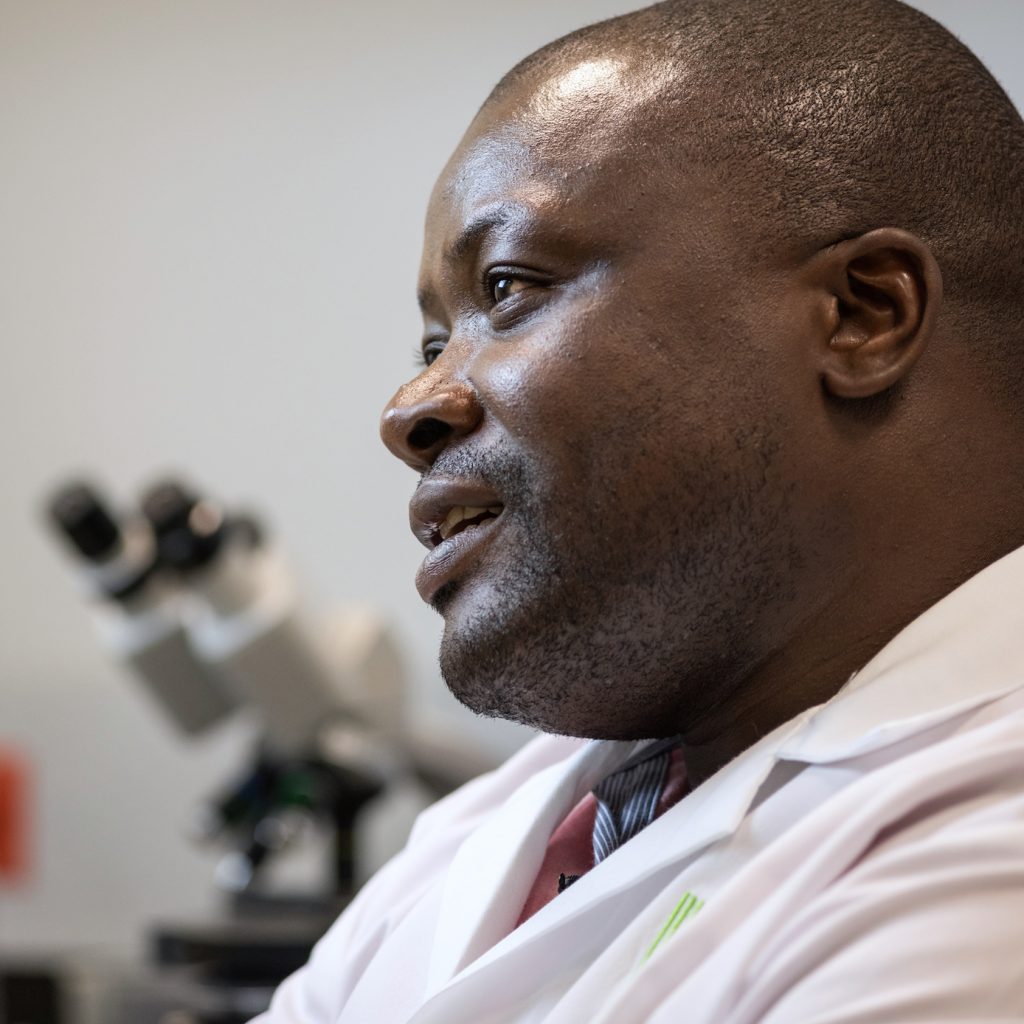
It’s very important that everyone working at CIMMYT, and especially those working with seed, is aware of the potential risks because about 30% of maize and 50% of wheat grown worldwide can be traced to CIMMYT germplasm. And it’s even more important for Mexico because most of our wheat breeding program is based here and it is also the center of origin for maize. With partners in more than 100 countries we have to be extremely vigilant. If anything goes wrong here, many countries will be at risk.
Ultimately, we want people to be aware of the important role they play in ensuring phytosanitary compliance because prevention is better than cure. We would like to envisage a situation where everybody in CIMMYT is aware of the mitigation processes that have been put in place to ensure safe seed exchanges.
Will you continue working to raise awareness beyond this year’s event?
Yes. In December 2018, the United Nations declared 2020 the International Year of Plant Health. Everybody will be encouraged to take this opportunity to inform people about the importance of seed health, especially as it relates to food security, environmental conservation and economic empowerment.
It’s exciting because this event only happens every 30 to 50 years, so this is really a once in a lifetime opportunity to showcase the work we do every day, both as a unit and in collaboration with our global partners.
Cover photo:
A mixture of maize seeds seen in close-up. (Photo: Xochiquetzal Fonseca/CIMMYT)
As climate change creates new challenges for farmers in Mexico, different landraces could prove extremely valuable to farmers. Different varieties of maize are able to grow in harsh weather conditions, and some could hold the key to using fewer chemicals in farming.
Over centuries, indigenous growers bred some 59 different native varieties of maize, or “landraces,” according to CIMMYT, the International Maize and Wheat Improvement Center, which preserves the seeds of some 48,000 maize varieties from all over the world at a seed bank in the town of Texcoco near Mexico City. Unlike commercial varieties sold by companies like Monsanto, landraces are highly adapted to the soil and climate of the communities where they are grown.
“Farmers keep selecting seeds from plants that do survive in extreme conditions to plant them in the following year,” said Martha Willcox, a geneticist at CIMMYT.
Read more here.
CIMMYT study finds that women are 33% more likely to pay for blue maize tortillas and men are 19% more likely. A person’s income had no impact on the willingness to pay more for blue maize.
Read more here.